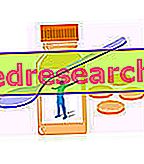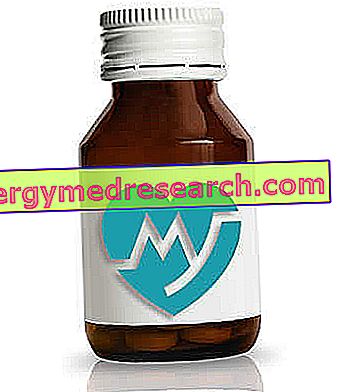Introduction
The level of blood cholesterol is determined by the endogenous production (70% TOT, by the liver) and by that ingested with food (30% TOT).
Diet and physical activity are the two winning weapons for lowering high cholesterol; the combination of both determines an improvement in the lifestyle that determines:
- the reduction of total cholesterol
- the reduction of bad cholesterol (LDL)
- increase in good cholesterol (HDL)
- consequently the decrease in cardiovascular risk.

The best strategy to reduce cholesterol (even if it is a lipid) is NOT an IPOlipidic diet! The effectiveness of cholesterol diet therapy is based on the predilection of unsaturated fats (up to 18-23% of the total) and on the simultaneous reduction of saturated fats (maximum 7% of the total); in this way it is possible to intervene from the metabolic point of view on excess cholesterol levels in the blood. Furthermore, by lowering the amount of dietary cholesterol (<200mg / day) and increasing the amount of fiber associated with plant sterols, it is possible to obtain an IPO-cholesterol-lowering effect to reduce intestinal absorption.
NB . In the case of overweight or obesity, the reduction of cholesterol will benefit more from an IPO-caloric diet aimed at reducing the overall weight and excess fat mass.
More suitable foods for hypercholesterolemia
Cholesterol-lowering foods fall into 5 groups; they are:
- rich in dietary fiber,
- rich in essential polyunsaturated fatty acids (PUFAs) (AGE) ω3,
- rich in PUFA-AGE ω6,
- rich in PUFA ω9
- added in sterols and / or plant stanols.
Food fiber group
The fiber reduces the absorption of dietary cholesterol and also the reabsorption of bile acids poured from the gallbladder (in turn rich in endogenous cholesterol); ultimately, by simply increasing the amount of dietary fiber it is possible to reduce LDL cholesterol. Foods with dietary fiber are vegetable ones, therefore: vegetables, fruit, cereals (especially whole grains), legumes and mushrooms; the fibrous component that mainly affects cholesterol is "soluble" and the daily dietary fiber intake should amount to about 30g (soluble + insoluble).
A particularly suitable food for the control of cholesterol is oat bran; if consumed every day, being rich in both soluble fiber (15.4 g per 100 g of product) and polyunsaturated fatty acids (2.8 g per 100 g of product), it effectively acts to reduce LDL cholesterol. The daily portion (possibly replaceable with whole grain oats) is about 40g, better if eaten at breakfast and accompanied by a cup of soy milk.
Food group with ω3
Foods rich in ω3 improve the metabolism of all the lipids transported in the blood, from cholesterol to triglycerides; moreover, they contribute to reducing the cardiovascular risk also thanks to their anti-thrombotic, anti-inflammatory and hypotensive function. The family of ω3 includes:
- Alpha linolenic acid (ALA) or 18: 3-ω3, contained predominantly in foods of vegetable origin (soy, linseed, walnut, kiwi oils, etc.)
- Eicosapentaenoic acid (EPA) 20: 5-ω3, contained predominantly in foods of animal origin (oils and meat of blue fish and those belonging to cold seas)
- Docosaesanoic acid (DHA) 22: 6-ω3 (also in this case, oils and meat of blue fish and those belonging to cold seas).
Food group with ω6
Even foods rich in ω6 improve the metabolism of endogenous cholesterol; ω6 fatty acids have the ability to reduce total cholesterol but without discrimination between LDL and HDL. The ω6 family includes:
- Gamma-linolenic acid (GLA) or 18: 3- ω6
- Diomo-gamma-linoleic acid (DGLA) or 20: 3- ω6
- Arachidonic acid (AA) or 20: 4- ω6
All ω6 essential polyunsaturated fatty acids are mainly contained in seeds and dried fruits (nuts, almonds, hazelnuts, sunflower seeds, peanuts, pistachios, pumpkin seeds, etc.), in seed oils, in dried fruit oils and in legumes. The amount of desirable dried fruit in the diet would be a few tens of grams (max 40), however, since these are foods with high caloric and lipid density, it is still advisable to balance the diet by eliminating other foods rich in fat (perhaps saturated) such as more seasoned cheeses, sausages etc., and taking better care of the dosage of seasoning oil.
Food group with ω9
The foods rich in ω9 selectively intervene on cholesterolemia reducing ONLY the LDL and keeping intact the portion of circulating HDL; ω9 fatty acids (non-essential PUFAs) are mainly found in olives and virgin olive oil. From a practical point of view, it is recommended not to exceed 2-3 tablespoons a day of virgin olive oil to avoid the risk of a caloric excess and the percentage of lipids in the diet.
Group of foods added with sterol and / or plant stanols
foods rich in plant sterols and stanols are fortified and therefore diet foods. Sterols and stanols (such as phospholipid lecithin ) bind cholesterol (preferably in combination with dietary fiber) and hinder intestinal absorption; 2 milligrams (mg) of sterols and / or stanols a day (contained in about 2 added yogurts or two glasses of orange juice of the same category) can reduce LDL cholesterol up to 10% of the total while keeping the HDL fraction intact.



